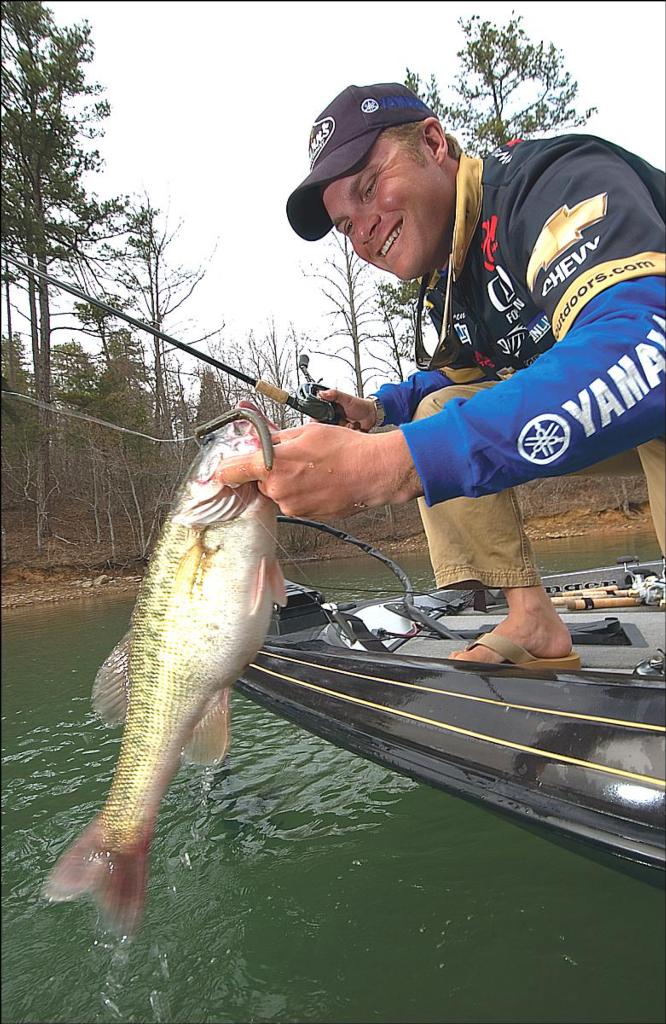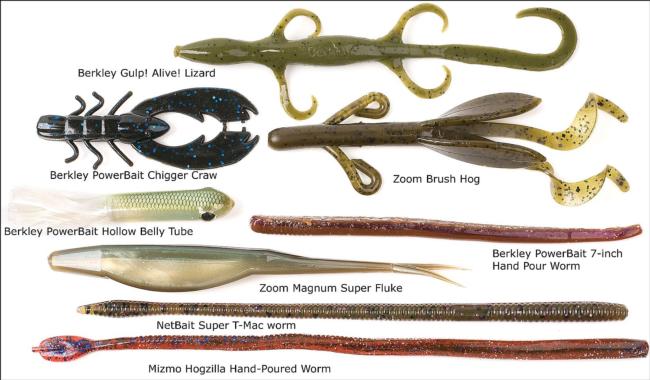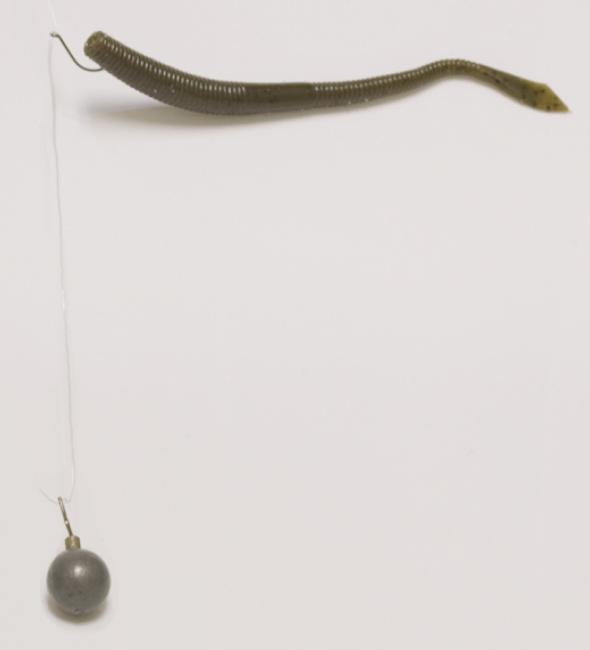Power up your drop-shot
Take your drop-shot rig beyond a finesse presentation

————————————–
Editor’s note: This article originally appeared in the May-June 2006 issue of FLW Outdoors Magazine. Learn more about FLW Outdoors Magazine and how to subscribe by clicking here.
————————————–
For anglers who live east of the Mississippi River, the term “drop-shot” often brings thoughts of deep water, wimpy rods, spinning reels, 6-pound-test and plastic worms the size of spaghetti noodles.
While many Eastern anglers automatically place the dainty drop-shot into the finesse category, Western pros Luke Clausen and Art Berry do not see it that way.
“Drop-shotting does not have to be a finesse technique for deep water,” Berry emphasized. “By beefing up tackle into the medium and heavy range, the drop-shot can be a total power technique in the shallows.”
Clausen agrees.
“When the drop-shot hitched a ride east with Aaron Martens, it was touted as a finesse technique and that’s how it got labeled,” he said. “But I fish a drop-shot on regular-duty tackle all the time, and it works great.”
In order to power up their drop-shot rigs, both pros go to 7-foot medium-heavy casting tackle spooled with fluorocarbon in the 12- to 17-pound-test range. Their drop-shot weight sizes will range from 1/4- to 3/8-ounce, depending on the depth and water color.
“There’s no limit to powering up the drop-shot,” Berry said. “I frequently pitch a drop-shot rig on 50-pound-test braided line in the California Delta.”
In addition, both pros also go to bigger, heavier gauge hooks.
“I usually go with a 2/0 or 3/0 straight-shank superline hook,” Berry recommended.
Powering up drop-shot tackle allows anglers a wider selection of soft plastics.
“Six- to 10-inch worms, Zoom Brush Hogs and Senkos are all fair game,” Berry noted. “One of my favorite drop-shot setups is a Senko rigged on 12- or 15-pound line – it makes a great pitching bait for docks and sparse vegetation.”

Clausen uses a similar setup when pitching a drop-shot to shallow cover.
“I like 16-pound fluorocarbon and a Mann’s Freefall worm or 6-inch Hardnose finesse worm,” he said.
So what’s the difference in pitching a regular Texas rig, where the weight is in front of the worm, and a drop-shot, where the weight in under the worm?
“It’s the fall of the bait and the way it stops just inches off the bottom instead of plowing the bottom,” explained Berry, who uses a 2- to 4-inch leader when pitching a heavier-duty drop-shot.
“Fish get so used to seeing a Texas rig fall and dig into the bottom on every hop, especially in soft, scummy bottoms around vegetation,” Berry continued. “With a drop-shot, the bait falls much differently, and because the weight is below the worm, the weight hits bottom first, allowing the plastic to hover and quiver just over the bottom – just like a sunfish or shad.”
Another big difference is that a drop-shot allows the angler to give the bait action without actually moving the bait.
“In order to activate a regular Texas-rigged plastic, especially one with little or no weight, you have to move the whole bait, and eventually it creeps out of the strike zone,” Berry added. “But with a drop-shot, you can impart action to the bait without ever removing it from the strike zone.”
The primary applications for pitching a powered-up drop-shot include any kind of sparse, vertical cover, such as docks, pilings and sparse vegetation.
“The drop-shot is not the best choice for heavy cover,” Clausen cautioned. “You can’t use it in situations where you are constantly pulling the bait back over stuff like matted vegetation or thick  bushes. But when you are dealing with fish on isolated objects, or individual clumps of vegetation, it’s a killer.”
bushes. But when you are dealing with fish on isolated objects, or individual clumps of vegetation, it’s a killer.”
Clausen likes pitching a beefier drop-shot during the spawn when bass are on beds that are not visible.
“When I can’t really see the beds but know where they should be, like next to isolated stalks of vegetation, that’s when it excels,” Clausen said. “I can pitch it into the area where I think the bed is and twitch it as long as I want without moving it.”
“That’s the real beauty of a ramped-up drop-shot,” Clausen added. “It combines power and finesse. By casting or pitching it, you can cover water and get to the strike zone fast. And once you’re there, you can work the strike zone as long as you want without having to reel up and make a repeated pitch.”